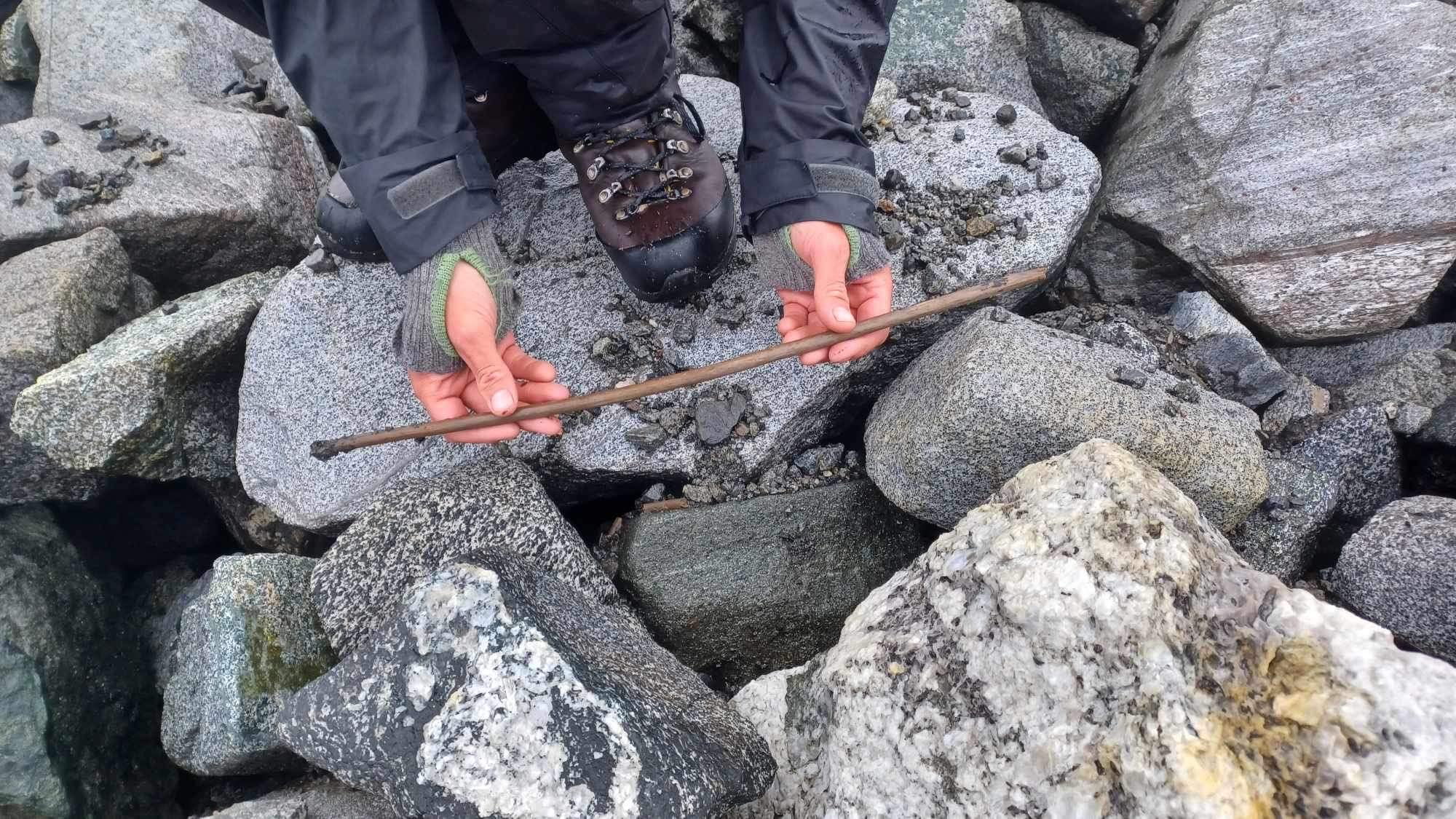Archeologists from Secrets of the Ice, a glacial archaeology program of Norway’s Department of Cultural Heritage, have discovered a Stone Age arrow shaft on the side of Mount Lauvhøe in Norway. The group surveyed the melting ice on Mount Lauvhøe in 2017 and found a number of Iron Age arrows, but the oldest were around 1,700 years old. This is the first Stone Age artifact discovered at the site.

“This new find adds a lot more time depth to the site,” said [co-director Dr. Lars Holger] Pilø in an email. “The site of Lauvhøe is one out of 66 such ice sites in our county alone. We currently have more than 4,000 finds from the ice.”
Likely, Pilø said, the arrow ended up in the ice while hunters were pursuing reindeer, which gathered near ice and snow on hot days to avoid botflies.
“The ancient hunters knew this and would have hunted the reindeer en route to and on the ice patch,” said Pilø in an email. “Sometimes, when an arrow missed its target, it burrowed itself deep into the snow and was lost. Sad for the hunter but a bull’s eye for archaeology!”
* This article was originally published here







No comments:
Post a Comment